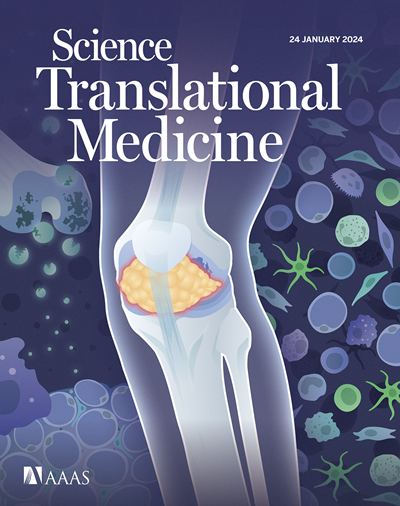Vaccination with mRNA-encoded membrane-anchored HIV envelope trimers elicited tier 2 neutralizing antibodies in a phase 1 clinical trial
IF 14.6
1区 医学
Q1 CELL BIOLOGY
引用次数: 0
Abstract
mRNA technology might accelerate development of an urgently needed preventive human immunodeficiency virus (HIV) vaccine. We evaluated the safety and immunogenicity of three mRNA-encoded envelope trimers, including two doses of soluble and membrane-anchored forms, in a randomized, open-label, phase 1 clinical trial. Vaccines were generally well tolerated, although 6.5% (7 of 108) of participants developed urticaria, a higher proportion than seen with other mRNA vaccines. mRNA-encoded trimers induced strong envelope-specific B and T cell responses. Immunization with membrane-anchored trimers, intended to obscure epitopes at the trimer base targeted by nonneutralizing antibodies, reduced the frequency of base-binding serum antibodies in comparison with soluble trimers. Three immunizations elicited autologous tier 2 serum neutralizing antibodies in 80% of vaccinees receiving the membrane-anchored trimers, in contrast to only 4% receiving the soluble trimer. Thus, with demonstration of more favorable safety, mRNA-encoded membrane-anchored HIV envelope trimers represent a promising platform for HIV vaccine clinical development.

在一项1期临床试验中,用mrna编码的膜锚定HIV包膜三聚体接种疫苗可引发2级中和抗体
mRNA技术可能加速开发急需的预防性人类免疫缺陷病毒(HIV)疫苗。在一项随机、开放标签的1期临床试验中,我们评估了三种mrna编码包膜三聚体的安全性和免疫原性,包括两种剂量的可溶性和膜锚定形式。疫苗通常耐受性良好,尽管6.5%(108人中有7人)的参与者出现了荨麻疹,这一比例高于其他mRNA疫苗。mrna编码的三聚体诱导了强包膜特异性B细胞和T细胞反应。与可溶性三聚体相比,用膜锚定三聚体免疫,旨在掩盖非中和抗体靶向三聚体碱基上的表位,降低了碱基结合血清抗体的频率。在接受膜锚定三聚体的80%的疫苗接种者中,三次免疫引发了自体2层血清中和抗体,而接受可溶性三聚体的疫苗接种者中,这一比例仅为4%。因此,mrna编码的膜锚定HIV包膜三聚体具有更有利的安全性,代表了HIV疫苗临床开发的一个有希望的平台。
本文章由计算机程序翻译,如有差异,请以英文原文为准。
求助全文
约1分钟内获得全文
求助全文
来源期刊

Science Translational Medicine
CELL BIOLOGY-MEDICINE, RESEARCH & EXPERIMENTAL
CiteScore
26.70
自引率
1.20%
发文量
309
审稿时长
1.7 months
期刊介绍:
Science Translational Medicine is an online journal that focuses on publishing research at the intersection of science, engineering, and medicine. The goal of the journal is to promote human health by providing a platform for researchers from various disciplines to communicate their latest advancements in biomedical, translational, and clinical research.
The journal aims to address the slow translation of scientific knowledge into effective treatments and health measures. It publishes articles that fill the knowledge gaps between preclinical research and medical applications, with a focus on accelerating the translation of knowledge into new ways of preventing, diagnosing, and treating human diseases.
The scope of Science Translational Medicine includes various areas such as cardiovascular disease, immunology/vaccines, metabolism/diabetes/obesity, neuroscience/neurology/psychiatry, cancer, infectious diseases, policy, behavior, bioengineering, chemical genomics/drug discovery, imaging, applied physical sciences, medical nanotechnology, drug delivery, biomarkers, gene therapy/regenerative medicine, toxicology and pharmacokinetics, data mining, cell culture, animal and human studies, medical informatics, and other interdisciplinary approaches to medicine.
The target audience of the journal includes researchers and management in academia, government, and the biotechnology and pharmaceutical industries. It is also relevant to physician scientists, regulators, policy makers, investors, business developers, and funding agencies.
 求助内容:
求助内容: 应助结果提醒方式:
应助结果提醒方式:


